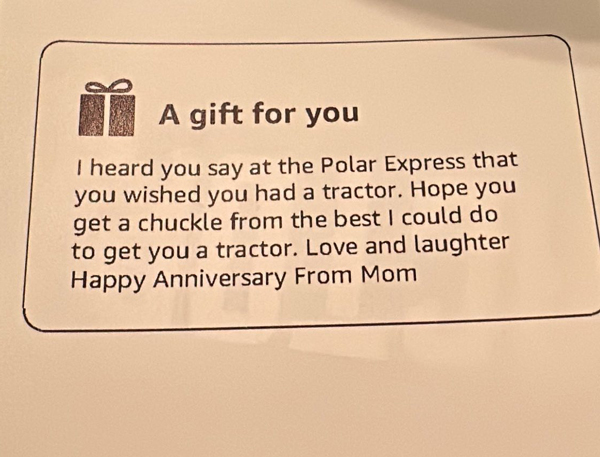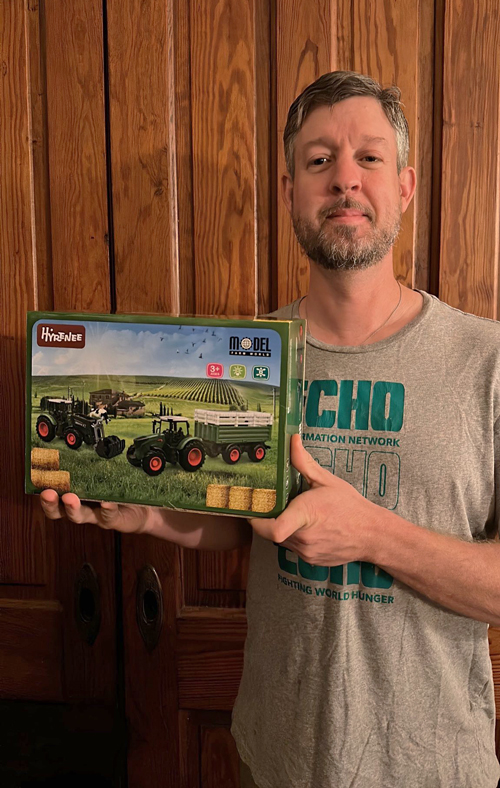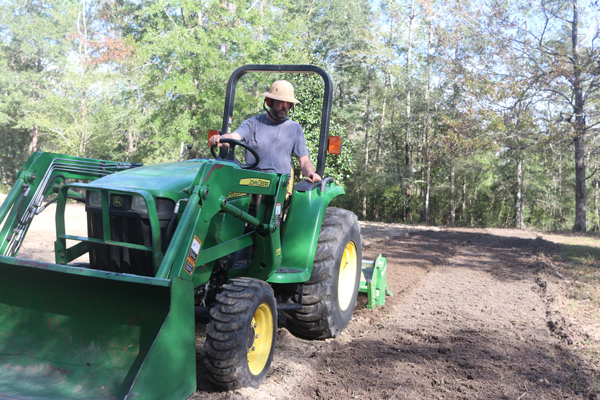For our anniversary, Mom really came through!

I was attending a local theater’s production of the Polar Express, when the actress playing the train conductor looked down into the audience and recognized me, then yelled, “So, Mr. Goodman, what do YOU want for Christmas!”
I yelled back, “A TRACTOR!”
And Mom heard me…
So now I have one!

Thank you, Mom. Love you lots – we had a great laugh.
My six-year-old son and four-year-old daughter are currently playing with this massive piece of diesel-powered machinery.
One day we might get a larger one. I miss the old tractor I used to borrow!

